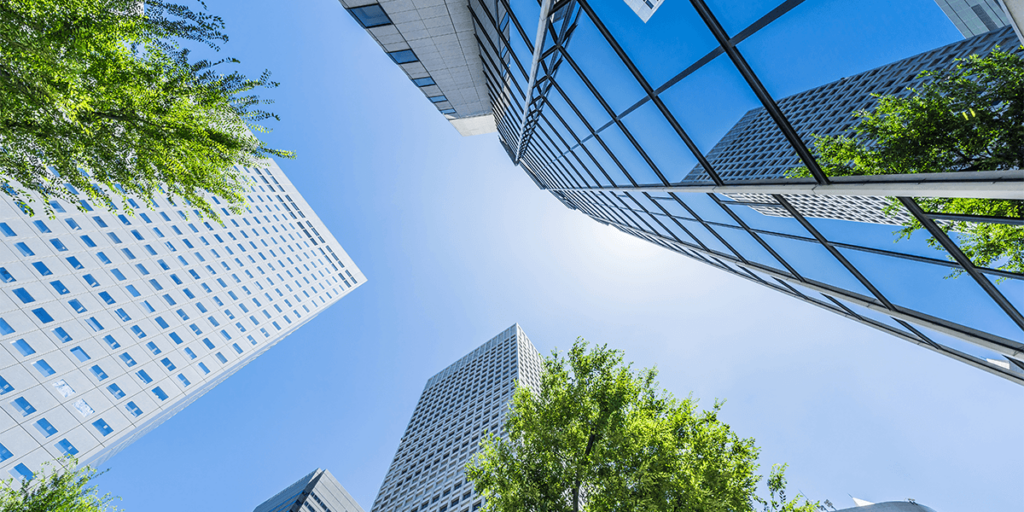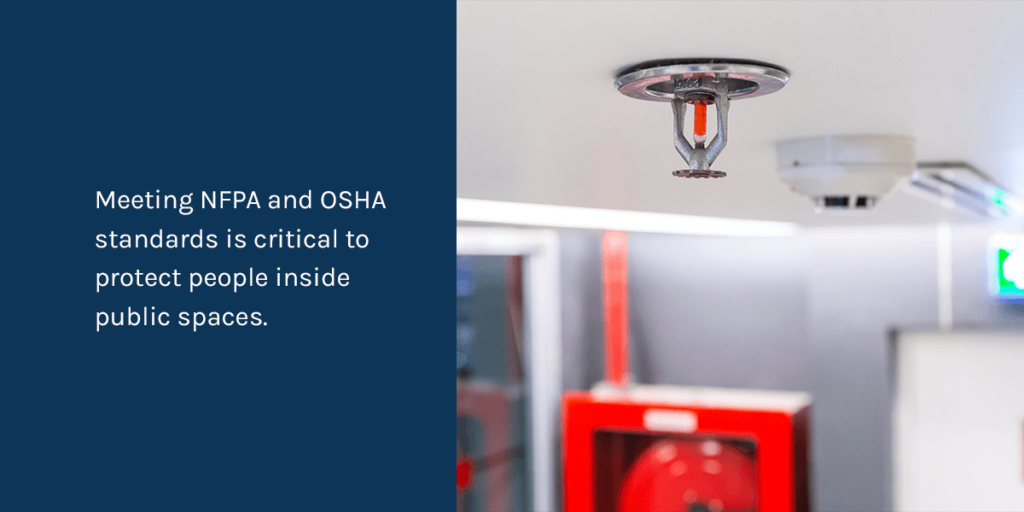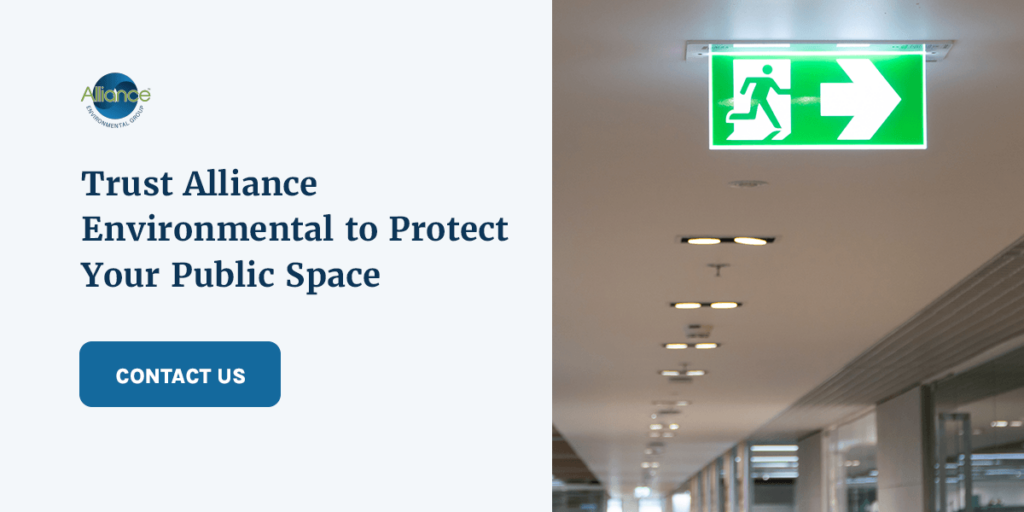- Careers
-
Search
- Call Us: 877-899-9867

Public buildings can be anything from offices to commercial businesses. These buildings can quickly get crowded, so it’s crucial to meet fire code regulations to ensure everyone inside is safe and can evacuate quickly during a fire.
Allowing hazards in these buildings can endanger lives and lead to asset loss. Following safety standards can help you improve fire safety in public buildings and protect yourself and others if a fire starts.
The National Fire Protection Association (NFPA) has created a fire code that all public and commercial buildings must follow to prevent fires, injury and loss of life. The NFPA has outlined standards to help keep people safe during a fire, which includes removing hazards and utilizing the proper fire safety training methods. These standards help protect anyone inside a public or commercial building, from staff to visitors.
The Occupational Safety and Health Administration (OSHA) also outlines industrial and commercial fire safety standards to protect workers, especially those handling chemical or other hazardous materials. It’s critical to follow these standards and regulations to ensure compliance and not put any of your employees in danger.
Fires can spread quickly, especially when fire hazards aren’t properly managed or a public space violates the fire code. Some of the most common hazards and violations include:
A blocked door can make it dangerous to exit and prevent people from evacuating safely during a fire. In a busy commercial or public setting, it can be easy to let doorways become blocked, making them one of the most common fire hazards. Even leaving something in a doorway for a few hours can be a hazard since a fire can happen anytime.
Installing fire detection systems, such as smoke and fire alarms, is only the first step. A professional must test these systems annually to ensure they’re working. Failing to have these systems tested regularly can become a hazard since one can malfunction or die without you realizing it.
It’s also possible to forget these systems exist once installed, especially if you have equipment or other materials blocking the way. It’s best to leave these systems unblocked where possible and have a set date for the testing and battery replacements. Leaving these systems untested can make it easier for fires to go undetected, allowing them to spread and cause injury or loss of life.
Many electrical items cause fires, such as frayed wiring or malfunctioning devices that are still in use. These devices can spark, which can set fire to flammable materials nearby. Using an extension cord for long periods can also be a hazard and a common fire code violation. If you use these cords long-term, it can increase the risk of a fire.
Rather than relying on extension cords long-term, you should hire an electrician to have them install an outlet where you need power. An electrician can also check your wiring to ensure it’s not faulty since many fires start from poorly maintained electrical systems of frayed wiring.
Fire safety equipment in buildings is an excellent way to stop a fire or delay its spread so people can evacuate. However, an inadequate system will not provide the necessary protection. For example, different types of fire sprinkler systems work best in different environments. You should always ensure your sprinkler system is up-to-date and a good fit for your business.
Other passive protection devices, like fire doors and fire dampers, also must remain functional for optimal safety. Fire doors consist of durable materials that provide additional protection against fire, like steel or fiberglass. These devices make it harder for smoke or flames to pass through doors, making them an essential suppression tool. However, blocked or malfunctioning fire doors cannot offer the necessary protection.
Fire dampers are installed in a facility’s heating, ventilation and air conditioning (HVAC) systems. They limit the spread of smoke and flames in a building’s air ducts. Dampers close automatically when they sense heat or smoke, trapping the fire’s effects in one location. If the system becomes damaged or loses functionality, buildings face additional hazards.
Another fire hazard is missing or damaged fire extinguishers. Whether these suppression tools are missing or damaged, they won’t stop a fire. You should have a way to keep track of your fire extinguishers and conduct regular inspections to ensure they work properly.
A common fire code violation is hanging different items from your piping or sprinkler heads. While it can seem convenient, hanging anything off these systems can cause them to accidentally activate, causing unnecessary water damage to your building. You can include signage to help discourage others from hanging things on sprinklers and piping, ensuring the system is only used for firefighting purposes.
The emergency fire response teams will need access to the building, including access points and fire hydrants. It violates the fire code to have items in the way of the access points and hydrants, including dumpsters, equipment or landscaping. Disrupting access to these connections can make it more challenging for firefighters to work, increasing the risk of injury and fire spreading.

Meeting NFPA and OSHA standards is critical to protect people inside public spaces. You can better prepare your public facility by keeping these factors in mind:
Fires can start unexpectedly, so taking the necessary steps to prevent these emergencies and having and emergency plan is crucial to protect your building and save lives. Alliance Environmental can help protect your building with our fire life safety services. These services cover anything from fire door and damper inspections and repairs to sprinkler head cleanings and asset tagging.
We can also assist with fire restoration through our environmental remediation services. We can help you restore your business to resume your operations as soon as possible. Contact us today to learn more about how we can make your public building safer, or request a quote to get started!
